
The Majestic Zarafshan Range: Uzbekistan's Hidden Gem
Experience the untouched beauty of the Zarafshan Range in Uzbekistan, where nature and history converge to offer an unforgettable adventure.
Nestled in the heart of Uzbekistan, the Zarafshan Range is a breathtaking mountain range that offers an unparalleled blend of natural beauty and cultural richness. This destination is perfect for nature lovers, adventure enthusiasts, and history buffs alike. The range stretches over 370 kilometers, providing a diverse landscape of rugged peaks, lush valleys, and pristine rivers. Travelers can explore a variety of outdoor activities such as hiking, bird watching, and climbing. The Zarafshan River, which flows through the range, is a popular spot for fishing and rafting. The region is also home to an array of flora and fauna, making it a paradise for nature photographers. The Zarafshan Range is steeped in history, with ancient sites and relics scattered throughout the area. Visitors can discover ruins of old fortresses, ancient petroglyphs, and remnants of the Silk Road. This historical significance adds a unique charm to the natural splendor, making it a must-visit destination for anyone traveling to Uzbekistan.
Local tips in Zarafshan Range
- Best time to visit is from April to October when the weather is most favorable.
- Carry sufficient water and snacks, as amenities are sparse in the mountainous areas.
- Hiring a local guide can enhance your experience by providing insights into the historical and natural aspects of the region.
- Wear sturdy hiking boots and layered clothing to adapt to changing weather conditions.
- Don't forget your camera; the scenic views and wildlife offer great photo opportunities.
The Majestic Zarafshan Range: Uzbekistan's Hidden Gem
Nestled in the heart of Uzbekistan, the Zarafshan Range is a breathtaking mountain range that offers an unparalleled blend of natural beauty and cultural richness. This destination is perfect for nature lovers, adventure enthusiasts, and history buffs alike. The range stretches over 370 kilometers, providing a diverse landscape of rugged peaks, lush valleys, and pristine rivers. Travelers can explore a variety of outdoor activities such as hiking, bird watching, and climbing. The Zarafshan River, which flows through the range, is a popular spot for fishing and rafting. The region is also home to an array of flora and fauna, making it a paradise for nature photographers. The Zarafshan Range is steeped in history, with ancient sites and relics scattered throughout the area. Visitors can discover ruins of old fortresses, ancient petroglyphs, and remnants of the Silk Road. This historical significance adds a unique charm to the natural splendor, making it a must-visit destination for anyone traveling to Uzbekistan.
When is the best time to go to Zarafshan Range?
Iconic landmarks you can’t miss
Registan Square
Discover the architectural splendor and historical significance of Registan Square, the iconic heart of Samarkand, Uzbekistan.

Amir Temur Mausoleum Gur-i Amir Сomplex
Discover the rich history and stunning architecture of the Amir Temur Mausoleum in Samarkand, a must-visit for all travelers exploring Uzbekistan.
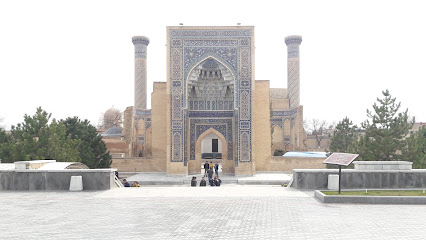
Shah-i-Zinda
Explore the architectural beauty and historical significance of Shah-i-Zinda, a UNESCO World Heritage site in Samarkand, Uzbekistan.

Ark of Bukhara
Explore the Ark of Bukhara, a historical fortress and cultural landmark that offers a glimpse into Uzbekistan's rich heritage and breathtaking architecture.
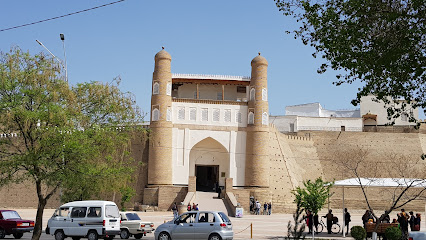
Itchan Kala
Explore the historical splendor of Itchan Kala, a UNESCO World Heritage site in Khiva, Uzbekistan, where ancient architecture meets vibrant culture.
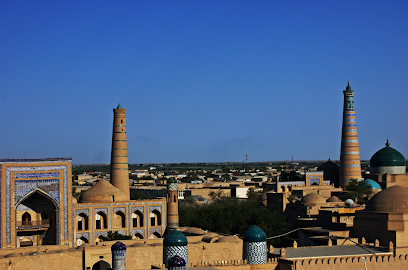
Amir Temur Square
Explore the beauty and history of Amir Temur Square in Tashkent, a cultural gem featuring stunning monuments and vibrant gardens.
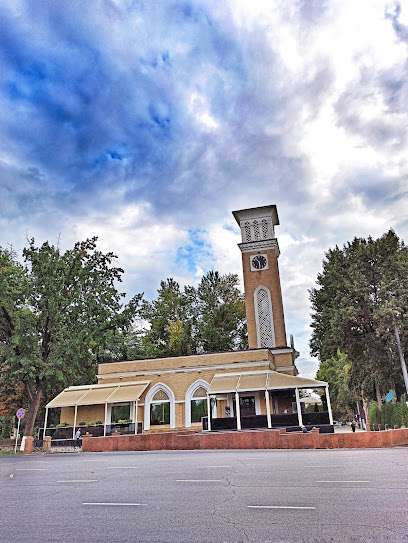
Chor Minor Madrasah
Explore the enchanting Chor Minor Madrasah in Bukhara, a historical landmark with stunning architecture and a glimpse into Uzbekistan's rich cultural heritage.
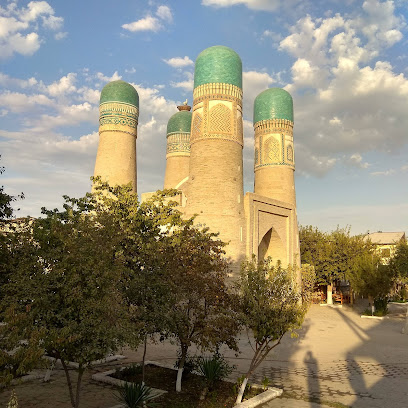
Kalta Minor Minaret
Explore the breathtaking Kalta Minor Minaret in Khiva, Uzbekistan, a stunning historical landmark showcasing exquisite architecture and rich cultural heritage.
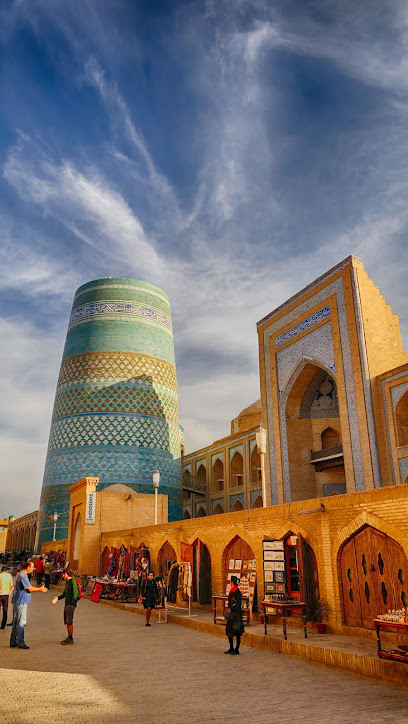
Monument of Courage
Explore the Monument of Courage in Tashkent, a powerful symbol of resilience and hope commemorating the city's recovery from a devastating earthquake.
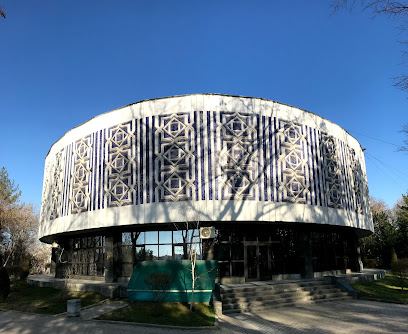
Sahid Zarafshon
Discover the perfect blend of luxury and tradition at Sahid Zarafshon, your gateway to the historical wonders of Bukhara.
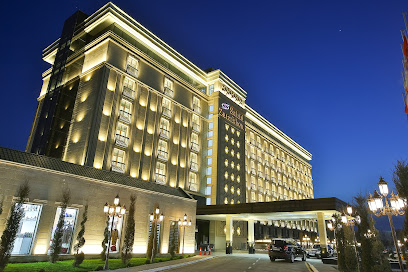
Zeravshan River
Explore the serene Zeravshan River in Uzbekistan, a stunning landscape perfect for adventure, relaxation, and cultural discovery.

Rukhobod Mausoleum
Explore the stunning Rukhobod Mausoleum in Samarkand, a historical landmark that showcases the rich cultural heritage and architectural brilliance of Uzbekistan.
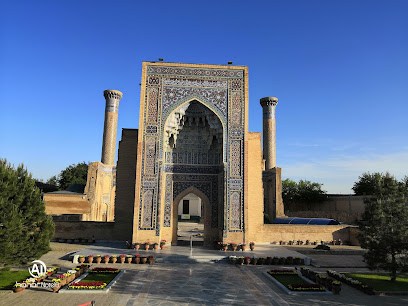
Statue of Amir Temur
Explore the iconic Statue of Amir Temur in Shahrisabz, a stunning monument celebrating Uzbekistan's rich history and culture.
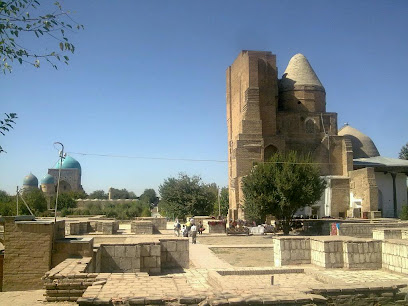
Kuhna Ark
Explore the magnificent Kuhna Ark in Khiva, Uzbekistan – a historic fortress and museum that reveals the splendors of ancient Islamic architecture.
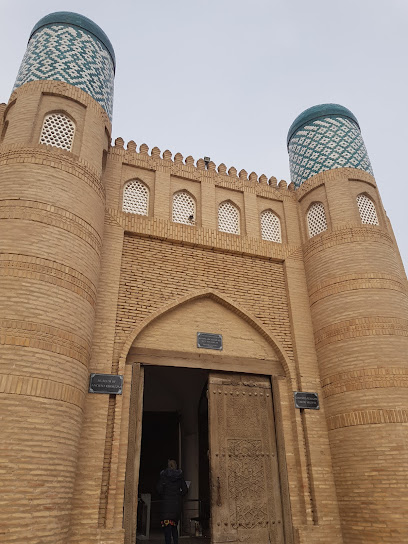
Zarafshan
Explore Zarafshan in Tashkent: a vibrant shopping mall offering a unique blend of local culture, modern retail, and delicious dining options.
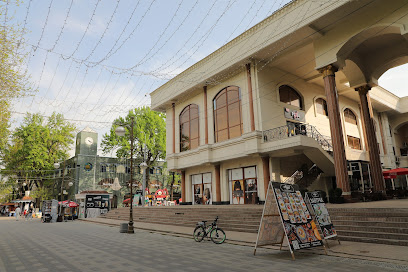
Unmissable attractions to see
Amir Temur Mausoleum Gur-i Amir Сomplex
Explore the stunning Amir Temur Mausoleum in Samarkand, a historical gem showcasing intricate architecture and the legacy of a great conqueror.
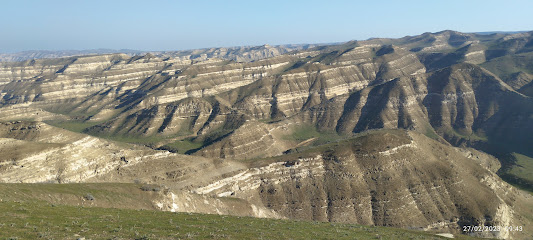
Observatory of Ulugbek
Discover the wonders of ancient astronomy at the Observatory of Ulugbek, a historical landmark in Samarkand that shaped the future of science.
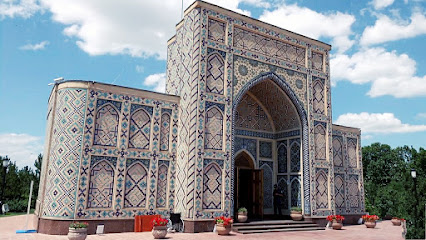
Kalta Minor Minaret
Discover the enchanting Kalta Minor Minaret in Khiva, a stunning historical landmark that showcases Uzbekistan's rich architectural heritage.
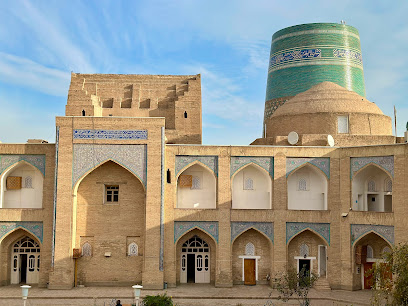
Zindan
Discover the haunting beauty of Zindan, a historical prison turned museum in Bukhara, revealing tales of resilience and cultural heritage.
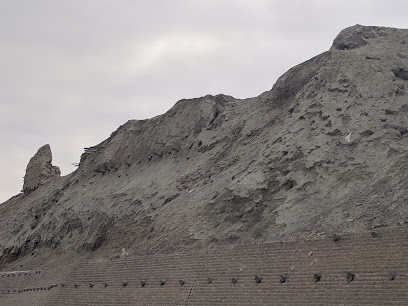
Kuhna Ark
Explore Kuhna Ark, a stunning fortress in Khiva, Uzbekistan, showcasing rich history and exquisite Islamic architecture.
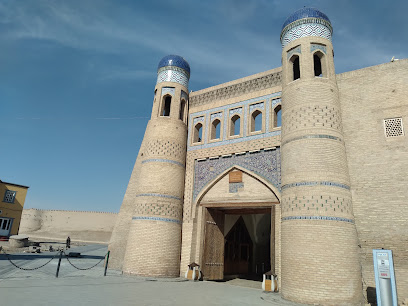
Silk Road Samarkand
Explore the rich history and stunning architecture at Silk Road Samarkand, a must-visit destination on your journey through Uzbekistan's enchanting past.
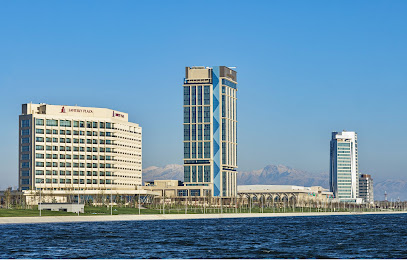
Happy Bird Art Gallery
Explore contemporary Uzbek art at Happy Bird Art Gallery, a vibrant center for creativity and cultural exchange in the heart of Samarkand.
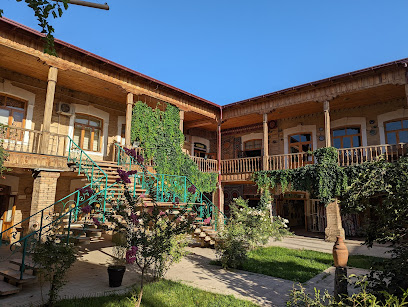
Chimtarga
Discover the breathtaking landscapes of Chimtarga, the majestic peak in Tajikistan that offers adventure, stunning views, and a connection to nature.
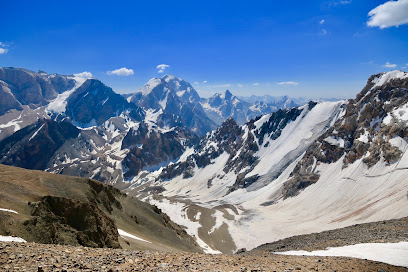
Mohammed Amin Khan Madrassah
Explore the historical marvel of Mohammed Amin Khan Madrassah in Khiva, a stunning testament to Islamic architecture and rich cultural heritage.
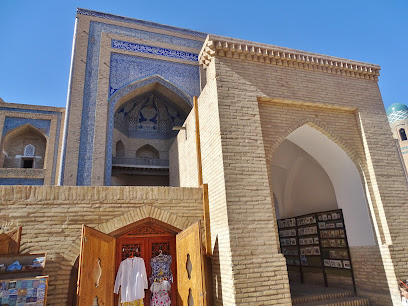
Faizabad Khanaka
Explore the breathtaking Faizabad Khanaka, a historic mosque in Bukhara, Uzbekistan, showcasing exquisite architecture and deep spiritual significance.
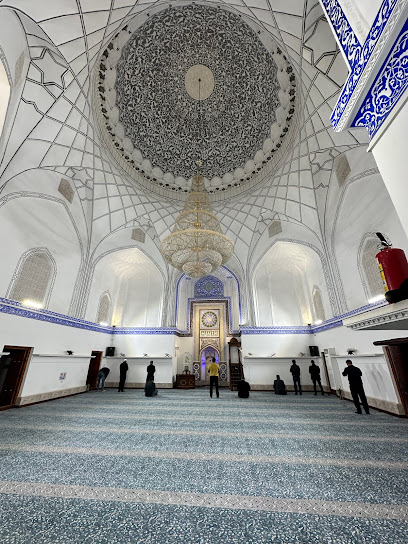
Samarkandskiy Vinnyy Zavod Imeni M. A. Khovrenko
Explore the exquisite wines of Uzbekistan at Samarkandskiy Vinnyy Zavod Imeni M. A. Khovrenko in Samarkand, a delightful destination for wine lovers.
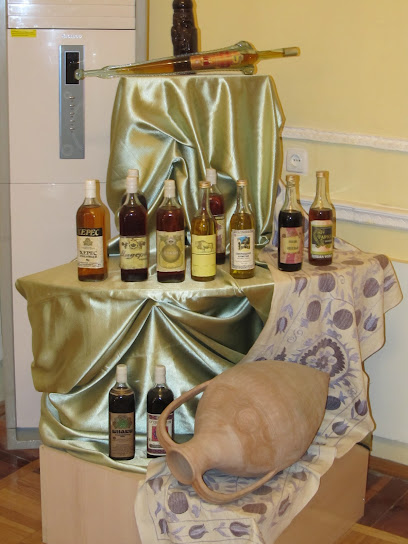
Essential places to dine
Cafe Zarafshon
Experience authentic Uzbek cuisine at Café Zarafshon in Khiva—where tradition meets flavor in a cozy setting.
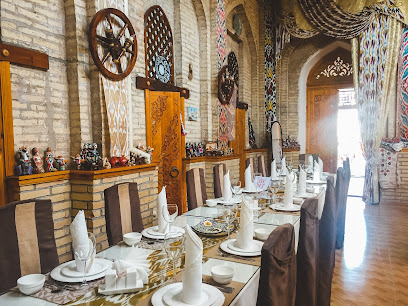
Gribok (Грибок)
Experience the rich flavors of Uzbekistan at Gribok Restaurant in Zarafshan - where every meal tells a story.

Sugdiyona restaurant
Discover authentic Uzbek flavors at Sugdiyona Restaurant in Zarafshan - a culinary haven for travelers seeking local delights.
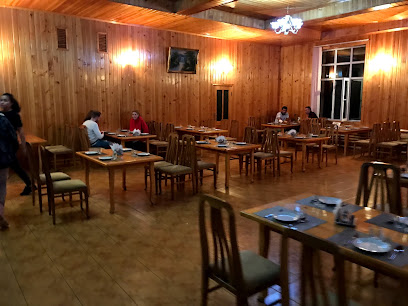
Euroasia restaurant
Discover the rich flavors of Uzbekistan at Euroasia Restaurant in Zarafshan – where tradition meets contemporary dining.
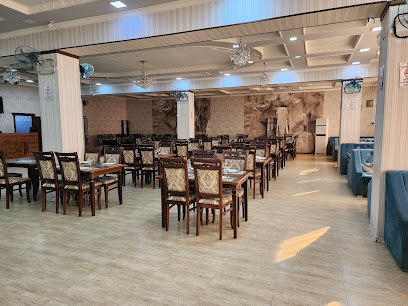
Zarafshon Restaurant
Discover the rich flavors of Uzbekistan at Zarafshon Restaurant in Samarkand - a delightful fusion of tradition and modernity awaits you.
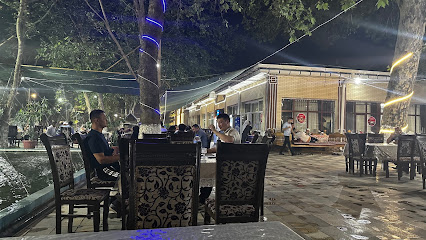
Kebab House
Discover delectable fast food delights at Kebab House in Zarafshan – where every bite is a taste of Uzbekistan's culinary charm.
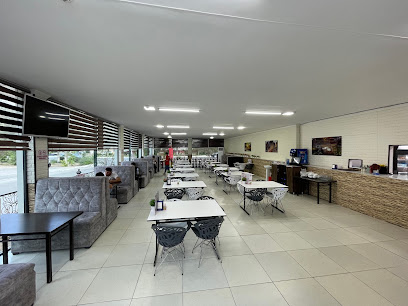
Кафе «Zarafshan»
Experience authentic Uzbek cuisine at Café Zarafshan in Navoi—where every dish tells a story.
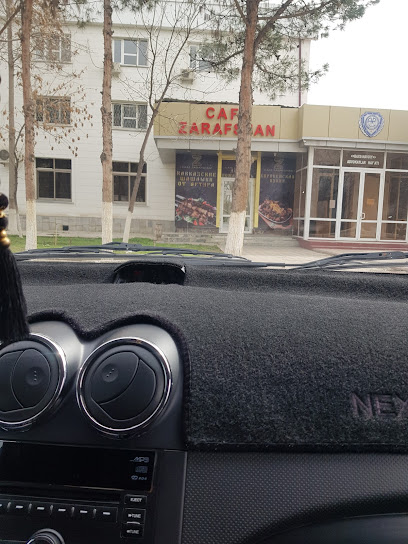
Nuridin Lavash Xona
Experience authentic Uzbek cuisine at Nuridin Lavash Xona in Zarafshan - where tradition meets flavor.
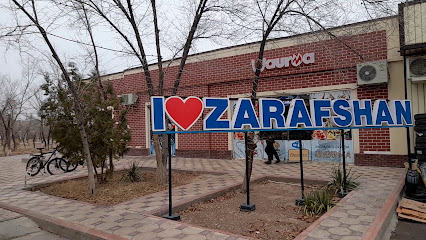
Restoran Sherdor
Savor the essence of Asian cuisine at Restoran Sherdor in Zarafshan - a must-visit for food lovers exploring Uzbekistan.
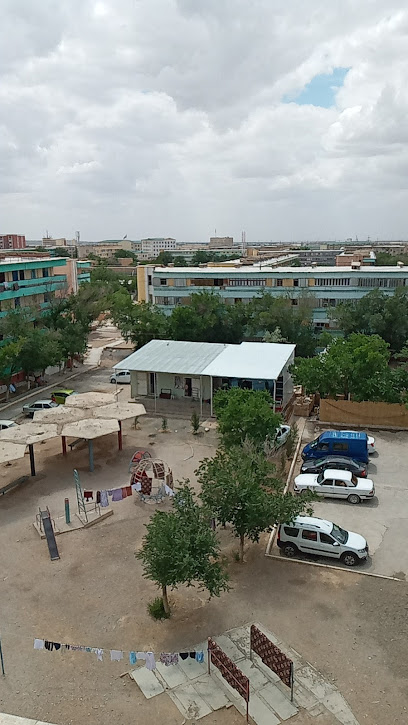
Restaurant Karavan
Experience authentic Uzbek cuisine at Restaurant Karavan in Zarafshan – where tradition meets taste in every dish.
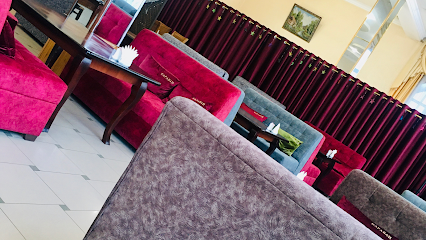
Hayat Premium restaurant
Experience authentic Turkish cuisine at Hayat Premium Restaurant in Zarafshan - where every dish tells a story.
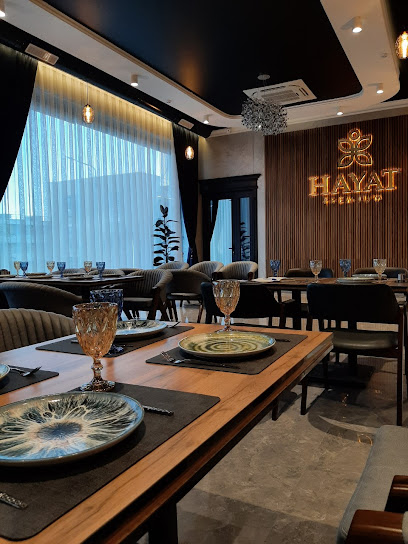
Abu Bakr Milliy taomlar
Savor authentic Uzbek cuisine at Abu Bakr Milliy Taomlar in Zarafshan - where tradition meets flavor.
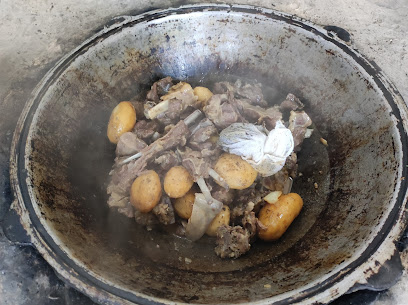
Istiqlol
Discover authentic Uzbek flavors at Istiqlol Restaurant in Zarafshan—an essential stop for every traveler seeking cultural culinary experiences.

BILLUR
Experience authentic Asian cuisine at BILLUR in Zarafshan - where flavor meets tradition in a welcoming atmosphere.

ZARAFSHON HALL
Discover authentic Uzbek flavors at Zarafshon Hall, where traditional cuisine meets modern elegance in Bukhara.
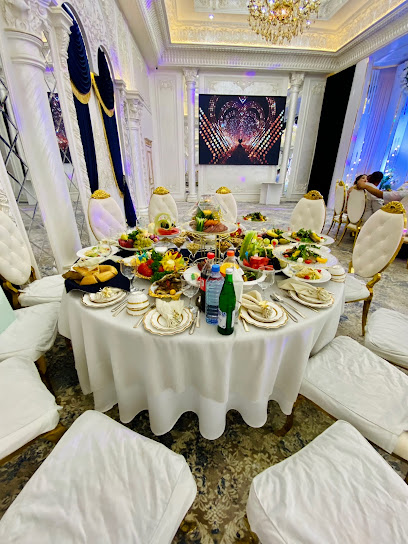
Markets, malls and hidden boutiques
Chorsu Bazaar
Explore Chorsu Bazaar in Tashkent, a vibrant market square rich in culture, history, and local flavors, perfect for every traveler seeking authentic experiences.
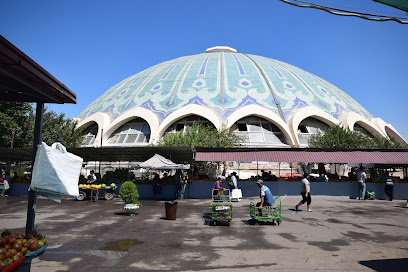
Makon Mall
Explore the vibrant Makon Mall in Samarkand, where shopping meets culture, offering a unique blend of retail, dining, and entertainment experiences.

Samarqand Darvoza Mall
Explore the dynamic shopping and dining experience at Samarqand Darvoza Mall in Tashkent, where modernity meets Uzbek hospitality.

Human House
Explore the artistic essence of Uzbekistan at Human House, Tashkent's premier gift shop showcasing unique local crafts and souvenirs.
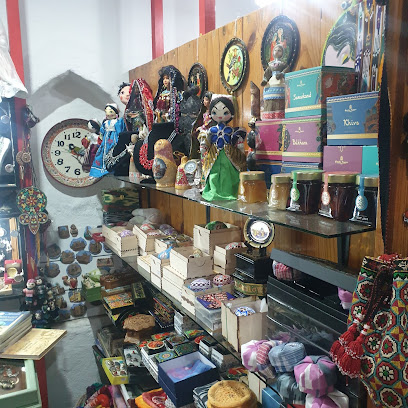
ZARAFSHON BOUTIQUE
Experience authentic Uzbek hospitality at Zarafshon Boutique, the charming hotel in the heart of Khiva, perfect for cultural immersion and modern comfort.

BIBI HANUM
Explore Bibi Hanum in Tashkent for unique fashion accessories, children's clothing, and cultural souvenirs that embody the spirit of Uzbekistan.
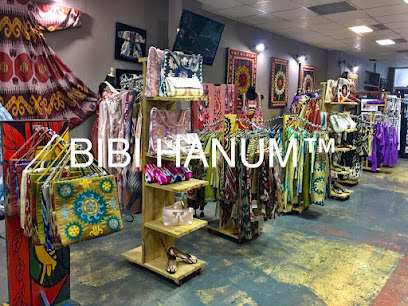
Fratelli Casa
Discover the vibrant fusion of modern fashion and traditional Uzbek styles at Fratelli Casa in Tashkent.

Podarochnyy Magazin Fleshka
Discover unique home goods and memorable gifts at Podarochnyy Magazin Fleshka, the perfect shopping destination in Zarafshan, Uzbekistan.
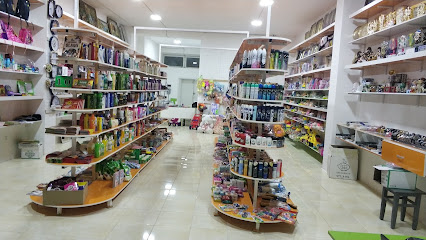
FRESH MARKET
Explore the vibrant Fresh Market in Zarafshan for fresh produce, local delicacies, and authentic cultural experiences amidst friendly vendors.

Zarafshon Katta bozor 92 magazin
Explore Zarafshon Katta Bozor: Your Ultimate Electronics Haven in the Heart of Zarafshan, Uzbekistan.
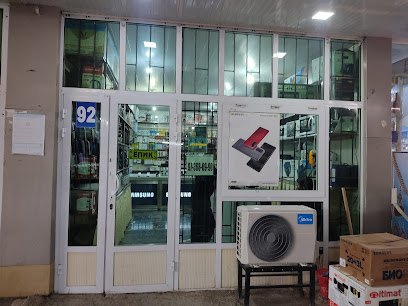
Aslzar
Explore the artistry of Aslzar Jewelry Store in Bukhara, where tradition meets modern elegance in unique handcrafted pieces.
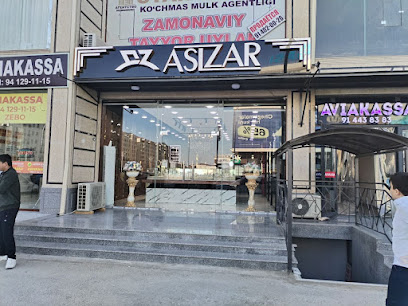
Habibashop
Explore Habibashop in Tashkent: A unique boutique showcasing exquisite local craftsmanship and contemporary designs for an unforgettable shopping experience.
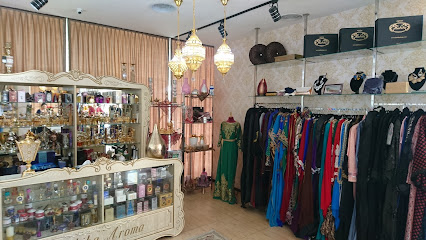
www.zarafshan.uz
Experience the vibrant e-commerce scene of Zarafshan, where tradition meets modern shopping in the heart of Uzbekistan.

Sadri paynet
Immerse yourself in the vibrant culture of Zarafshan at Sadri Paynet, where local goods and community spirit come together.
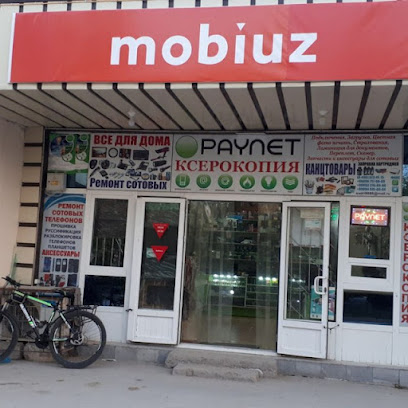
FARXOD ESHIKLARI
Discover the vibrant essence of Zarafshan at FARXOD ESHIKLARI, where local craftsmanship meets everyday needs in a bustling market atmosphere.

Essential bars & hidden hideouts
Steam Bar
Discover the lively Steam Bar in Tashkent, where unique cocktails and local culture meet for an unforgettable nightlife experience.
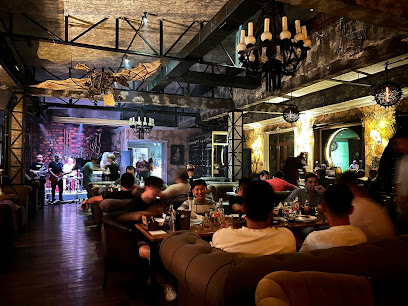
The Irish Pub & Restaurant
Discover the heart of Irish culture at The Irish Pub & Restaurant in Tashkent, where authentic cuisine and a warm atmosphere await.
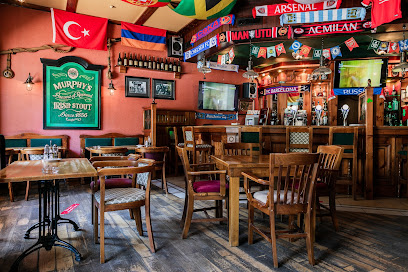
7 Fridays
Experience Tashkent's nightlife at 7 Fridays, a lively bar offering a fusion of local and international drinks in a vibrant setting.
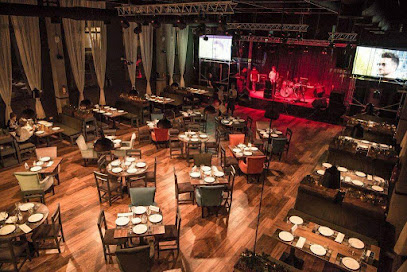
Cafe Zarafshon
Discover the flavors of Uzbekistan at Café Zarafshon, a charming restaurant in Khiva, offering traditional dishes and a warm atmosphere.
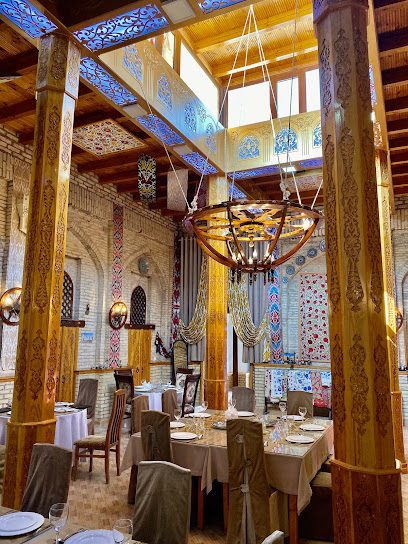
ONEMORE Wonder Bar
Discover the vibrant nightlife at ONEMORE Wonder Bar in Tashkent, where cocktails and music create an unforgettable experience.

Beer Street Pub
Experience the vibrant atmosphere of Beer Street Pub in Samarkand, where local flavors meet international charm in a lively setting.
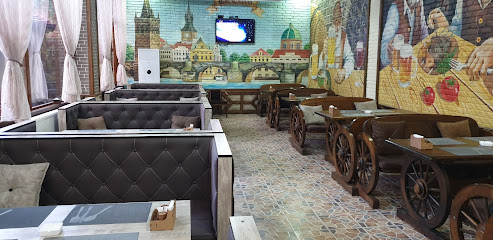
The Bar Speak Easy
Discover Tashkent's vibrant nightlife at The Bar Speak Easy, where exquisite cocktails and a stylish atmosphere await.
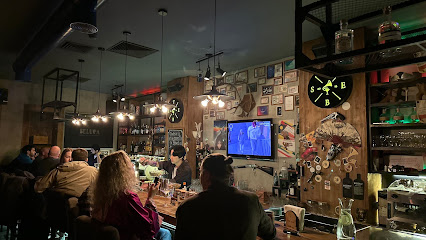
Zarafshon
Experience the electrifying nightlife at Zarafshon, a premier nightclub in Uzbekistan's Navoiy Region, where music and culture unite.
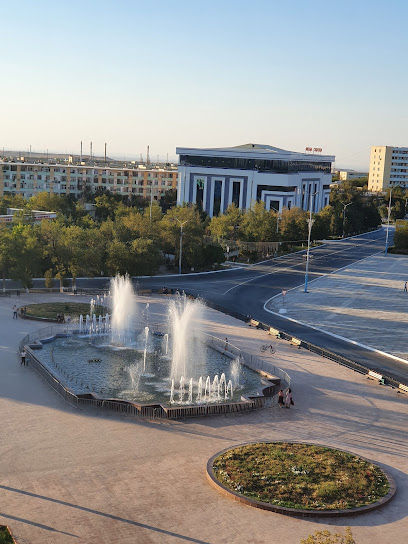
Tashkent Tavern
Experience the vibrant atmosphere of Tashkent Tavern, where local culture meets great drinks in the heart of Uzbekistan's capital.

Euroasia restaurant
Experience the vibrant flavors of Uzbekistan at Euroasia Restaurant, a culinary haven in Zarafshan offering a diverse menu and warm hospitality.
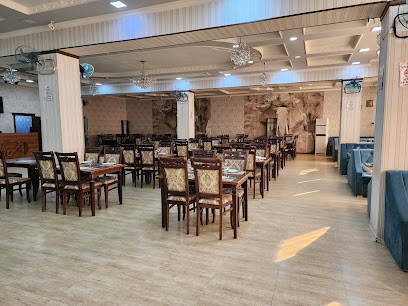
Кафе «Zarafshan»
Discover the authentic flavors of Uzbekistan at Café Zarafshan in Navoi, where traditional dishes meet warm hospitality.
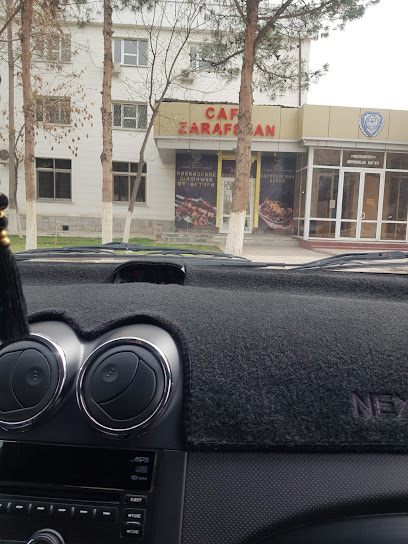
Kafe-Bar ULFATLAR
Discover Kafe-Bar ULFATLAR, a cozy cafe in Zarafshan, Uzbekistan, offering local cuisine and a welcoming atmosphere for every visitor.
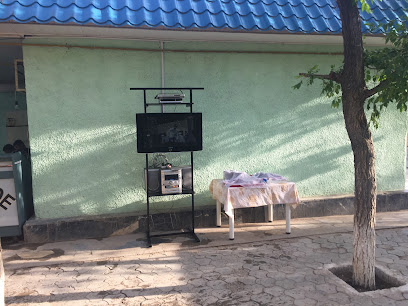
BILLUR
Experience the authentic taste of Asian cuisine at Billur, a hidden culinary gem in Zarafshan, Uzbekistan.

SHERBEKSHOX. kafe
Experience the authentic taste of Uzbekistan at Sherbekshox Cafe, a cozy spot in Zarafshan known for its warm hospitality and delightful menu.
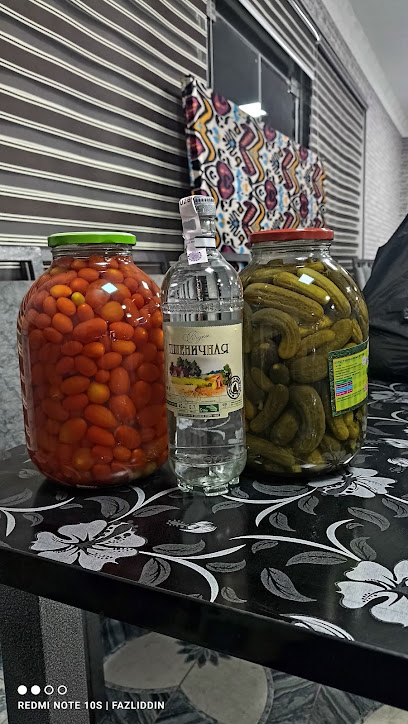
Kafe Sayera
Discover Kafe Sayera in Zarafshan, a cozy bar offering local flavors, a welcoming atmosphere, and a taste of Uzbek culture.

Local Phrases about Zarafshan Range
-
- HelloСалом
[Salom] - GoodbyeХайр
[Khayr] - YesҲа
[Ha] - NoЙўқ
[Yo'q] - Please/You're welcomeИлтимос/Марҳамат
[Iltimos/Marhamat] - Thank youРаҳмат
[Rahmat] - Excuse me/SorryКечирасиз
[Kechirasiz] - How are you?Нима кўришингиз?
[Nima ko'rishingiz?] - Fine. And you?Жуда хубсангиз. Сизча?
[Juda hubsangiz. Sizcha?] - Do you speak English?Инглиз тилини биласизми?
[Ingliz tilini bilasizmi?] - I don't understandМени тушунмади
[Meni tushunmadi]
- HelloСалом
-
- I'd like to see the menu, pleaseМенюни кўрмоқчиман, илтимос
[Menyuni ko'rmoqchiman, iltimos] - I don't eat meatМен гўсфил учмайман
[Men go'sfil uchmayman] - Cheers!Точиқ!
[Tochiq!] - I would like to pay, pleaseТўлов қилишни истайман, илтимос
[Tolov qilishni istayman, iltimos]
- I'd like to see the menu, pleaseМенюни кўрмоқчиман, илтимос
-
- Help!Ёрдам!
[Yordam!] - Go away!Ёзил!
[Yozil!] - Call the Police!Полицияни чақиринг!
[Poliyani chaqiring!] - Call a doctor!Докторни чақиринг!
[Doktorni chaqiring!] - I'm lostМен йўлни йўқолдим
[Men yo'lni yo'qoldim] - I'm illМен касалман
[Men kasalman]
- Help!Ёрдам!
-
- I'd like to buy...Сотиб олишни истайман...
[Sotib olishni istayman...] - I'm just lookingФақат кўриб турмоқчиман
[Faqat ko'rib turmoqchiman] - How much is it?Бу қанча пул?
[Bu qancha pul?] - That's too expensiveБу жуда қиматли
[Bu juda qimatli] - Can you lower the price?Нархни тўлағизми?
[Narxni to'lagizmi?]
- I'd like to buy...Сотиб олишни истайман...
-
- What time is it?Соат қачон?
[Soat qachon?] - It's one o'clockБир соат
[Bir soat] - Half past (10)Ёрдамчи (10)
[Yordamchi (10)] - MorningЭрталаб
[Ertalab] - AfternoonКечаси
[Kechasi] - EveningКеч
[Kech] - YesterdayКеча
[Kecha] - TodayБугун
[Bugun] - TomorrowЭртага
[Ertaga] - 11
[1] - 22
[2] - 33
[3] - 44
[4] - 55
[5] - 66
[6] - 77
[7] - 88
[8] - 99
[9] - 1010
[10]
- What time is it?Соат қачон?
-
- Where's a/the...?Қаерда...?
[Qaerda...?] - What's the address?Манзил қаерда?
[Manzil qayerda?] - Can you show me (on the map)?Менга кўрсатасизми (харитада)?
[Menga korsatasizmi (haritada)?] - When's the next (bus)?Кейингиси (автобус) қачон?
[Keyingisi (avtobus) qachon?] - A ticket (to ....)Билет (.... га)
[Bilet (.... ga)]
- Where's a/the...?Қаерда...?
History of Zarafshan Range
-
The Zarafshan Range, nestled in the heart of Uzbekistan, has been a cradle of human civilization since ancient times. Archaeological findings suggest that early human settlements in the region date back to the Bronze Age. The ancient city of Samarkand, located at the foothills of the Zarafshan Range, has been a significant cultural and economic hub for millennia. The region's fertile valleys supported agriculture and trade, fostering the growth of early civilizations.
-
The Zarafshan Range played a pivotal role during the Silk Road era, serving as a major artery for trade between the East and the West. Caravans laden with silk, spices, and other goods traversed the mountain passes, linking China, Persia, and Europe. The bustling trade route brought prosperity to the region and led to the rise of several prominent cities along the range, including Samarkand and Bukhara. These cities became melting pots of cultures, languages, and religions, leaving a lasting legacy on the region's cultural landscape.
-
In the 14th century, the Zarafshan Range witnessed the rise of the Timurid Dynasty, founded by the legendary conqueror Timur (Tamerlane). Timur made Samarkand his capital and transformed it into a magnificent city adorned with grand architectural marvels. The Timurid period marked a golden age for the Zarafshan Range, with significant advancements in art, science, and architecture. The region's historical monuments, including the Registan and the Shah-i-Zinda necropolis, stand as testaments to the Timurid legacy.
-
The 19th century brought significant changes to the Zarafshan Range with the expansion of the Russian Empire into Central Asia. The region was annexed by the Russians in the latter half of the century, leading to the establishment of the Zarafshan District. The Russian conquest brought modernization and infrastructural development, including the construction of railways and roads that facilitated easier access to the mountainous terrain. However, it also resulted in cultural and political shifts that had lasting impacts on the local population.
-
During the Soviet era, the Zarafshan Range underwent further transformation. The Soviet government implemented large-scale agricultural and industrial projects, dramatically altering the landscape. The construction of hydroelectric dams and mining operations in the mountains boosted the region's economy but also had environmental consequences. The era saw the introduction of new educational and cultural institutions, which aimed to integrate the region into the broader Soviet framework while preserving its unique cultural heritage.
-
Following Uzbekistan's independence in 1991, the Zarafshan Range has continued to evolve. The region has seen a resurgence of interest in its rich cultural and historical heritage. Efforts have been made to preserve and restore historical monuments and promote tourism. The Zarafshan Range now attracts travelers from around the world, drawn by its breathtaking natural beauty and its storied past. The local communities are actively involved in showcasing their traditions, crafts, and cuisine, offering visitors an authentic glimpse into the vibrant culture of the region.
Zarafshan Range Essentials
-
Zarafshan Range is located in central Uzbekistan, and the nearest major city is Samarkand. The easiest way to get there is by flying into Samarkand International Airport (SKD), which is well-connected to major cities in Europe and Asia. From Samarkand, you can hire a taxi or use a private transfer service to reach the Zarafshan Range. The journey typically takes around 2 to 3 hours by road. Alternatively, you can take a train from Tashkent to Samarkand and then proceed by road.
-
Within the Zarafshan Range, transportation options are limited. Renting a car in Samarkand is a convenient way to explore the area at your own pace. Alternatively, you can hire a local guide with a vehicle. Public transportation in the form of buses or marshrutkas (shared minibuses) is available but may not be very frequent. Taxis can be found in larger towns, but it's advisable to agree on a fare beforehand.
-
The official currency in Uzbekistan is the Uzbekistani Som (UZS). Credit cards are accepted in some hotels, restaurants, and shops in larger cities like Samarkand, but it is advisable to carry cash, especially in rural areas like the Zarafshan Range. ATMs are available in Samarkand, but it is wise to withdraw sufficient cash before heading into the mountains to ensure you have enough funds.
-
The Zarafshan Range is generally a safe destination for tourists. However, like any travel destination, it is advisable to take standard precautions. Avoid walking alone at night in unfamiliar areas and keep an eye on your belongings in crowded places. There are no specific high-crime areas targeting tourists, but it is always best to stay vigilant and aware of your surroundings.
-
In case of emergency, dial 103 for medical assistance and 102 for police. The nearest major hospital is in Samarkand. It is recommended to have travel insurance that covers medical emergencies. For minor health issues, there are pharmacies in larger towns where you can purchase over-the-counter medications. Always carry a basic first-aid kit when hiking or trekking in the mountains.
-
Fashion: Do dress modestly, particularly when visiting local villages or religious sites. Avoid wearing revealing clothing. Religion: Do respect local customs and traditions. Always cover your head when entering mosques. Public Transport: Do be respectful and give up your seat to elderly passengers. Don't eat or drink on public transport. Greetings: Do greet people with a handshake. A slight bow of the head is also a sign of respect. Eating & Drinking: Do try local delicacies and accept food offerings graciously. Don't refuse hospitality, as it is considered impolite.
-
To experience the Zarafshan Range like a local, visit the local bazaars where you can buy fresh produce and traditional Uzbek goods. Engage with locals, as they are often friendly and willing to share stories about the region's history and culture. Don't miss visiting the Nuratau-Kyzylkum Biosphere Reserve for its unique flora and fauna. For a unique experience, take a guided trek to the remote mountain villages where you can experience traditional Uzbek hospitality.
Trending Landmarks in Zarafshan Range
Nearby Cities to Zarafshan Range
-
Things To Do in Bukhara
-
Things To Do in Urgench
-
Things To Do in Samarkand
-
Things To Do in Khiva
-
Things To Do in Qarshi
-
Things To Do in Djizak
-
Things To Do in Jizzakh
-
Things To Do in Shakhrisabz
-
Things To Do in Panjakent
-
Things To Do in Turkestan
-
Things To Do in Tashkent
-
Things To Do in Istaravshan
-
Things To Do in Chirchiq
-
Things To Do in Shymkent
-
Things To Do in Bayramaly






